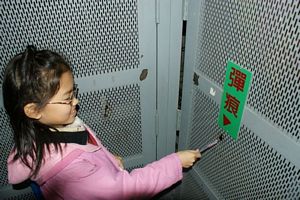|
Content:
|
Participants:
Advising teachers: Director Hsun-de Cho, Mr. Bao-chia (teacher) Wu, Teacher
Wei-chun Chang
Volunteers: Da-sheng Lin,
Bao-chian Tzeng, Chun-ling Hsiao
Students: Ting-wei Hsu, Min-ching Hsieh, Ya-jun Hsu, Rong-cheng Liu,
Hsin-ju Hsu, Tze-qi Lin, Hong-yu Hsu, Jun-hsian Hsu, Wei-wen Hsu, Jing-yu
Hsu
We went to Minhsiung, Chiayi to visit theNational Radio
Museum. Once we got
to the place, we went inside immediately. First, we saw an introduction
video. After that, our chief asked Ms. Liu to be our guide for touring the
museum. First, we saw a plate and then a model. After that, we went to the
2nd floor. I recorded a lot of things on the staircase, such as
Marconi, an Italian, discovered radio inLondon;
De Forest, a Canadian, was experimenting with creating a broadcasting
station atPittsburg,USA, and also the first
broadcast of TBS, among other things. Next, there was a small door on the 2nd
floor and we went in to visit. Our guide told us that the Central Station
was built by the Japanese and it was approximately 206 meters, which was
over 70 floors in height! We almost couldn・t see its top. Later, the guide
told us that BCC was 81 years old (almost a century old)! We went to
another small house and we saw that there were 13 language programs,
including Mandarin, Russian, Taiwanese dialect, Hakkam etc. I even saw the
bullet hole on the door of the power generator! There is a bullet hole next
to the power generator. Our guide said that it was left during WWII. We
even saw the vinyl records of old, which became antiques! We also saw small
vacuum tubes. Time passed fast and we told the guide goodbye and then took
some photos and ended our journey.
Photo: Jing-yu
Hsu pointed at the bullet hole and says: :this was left during WWII.;

|

